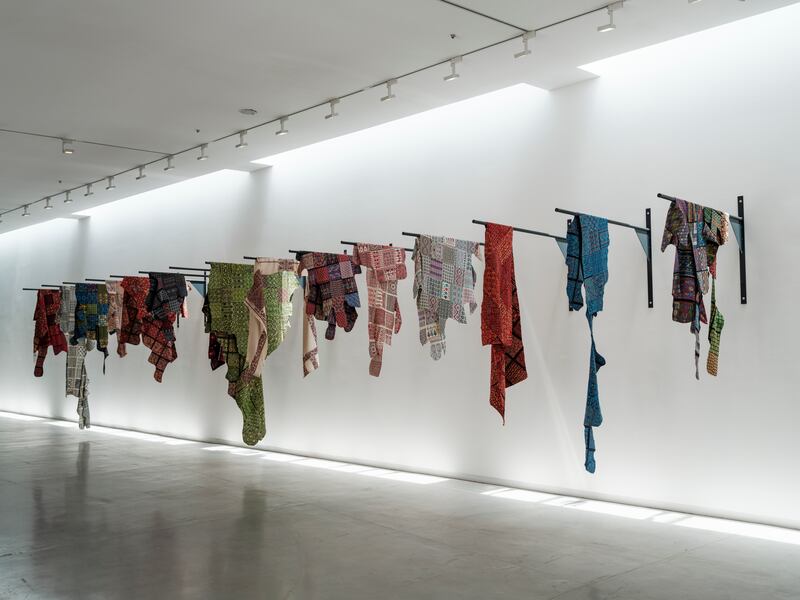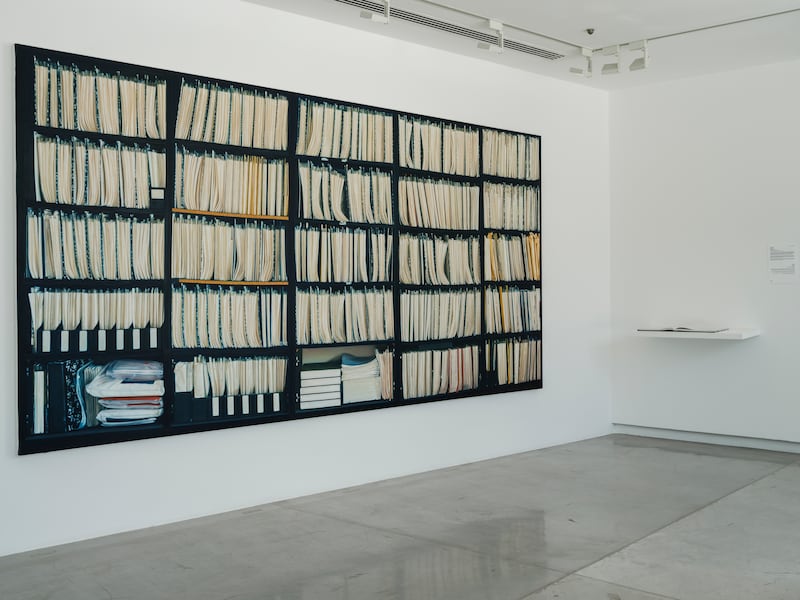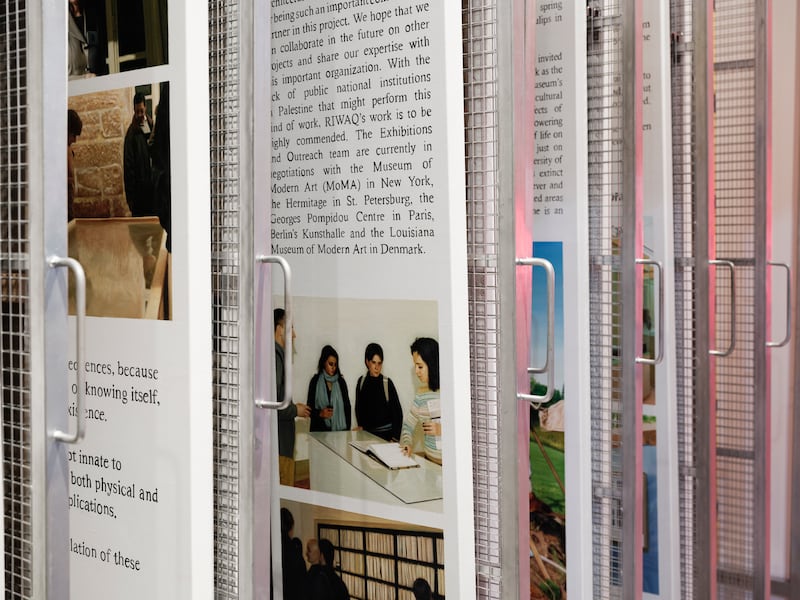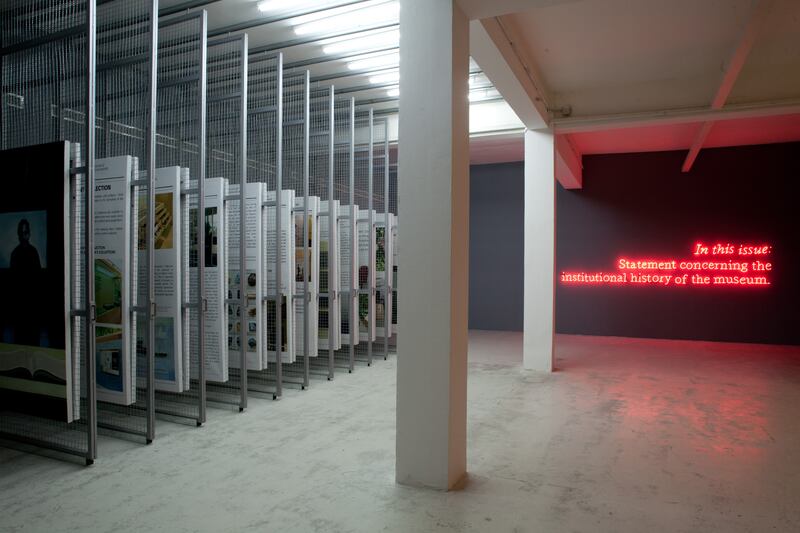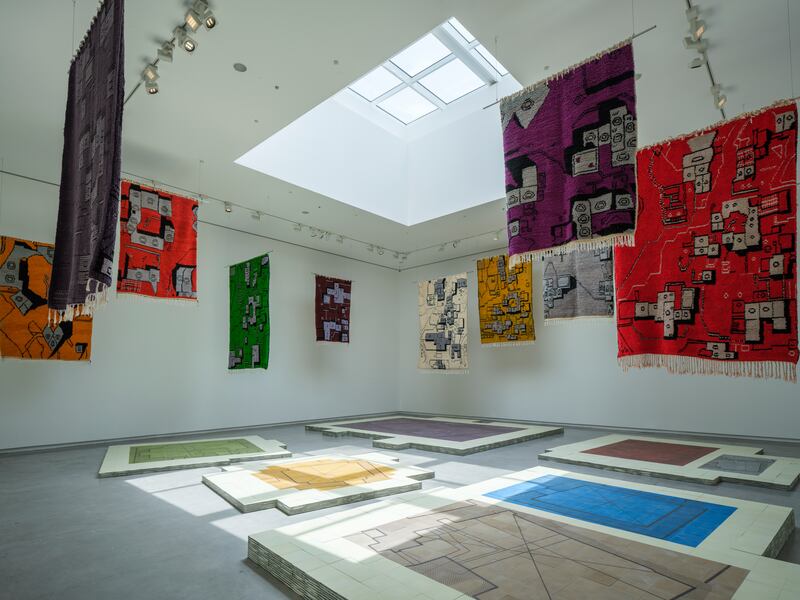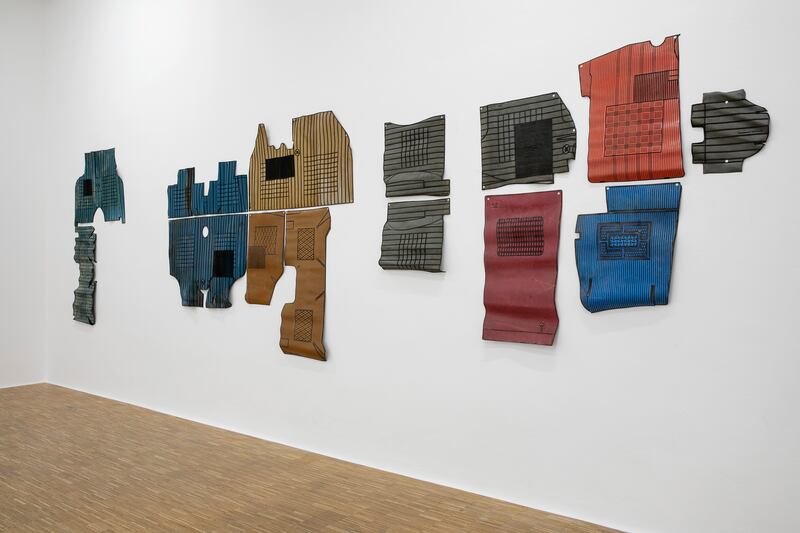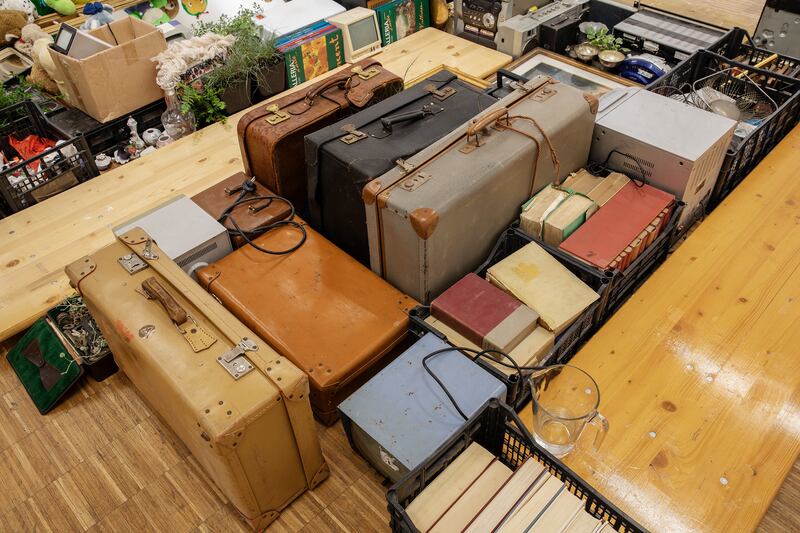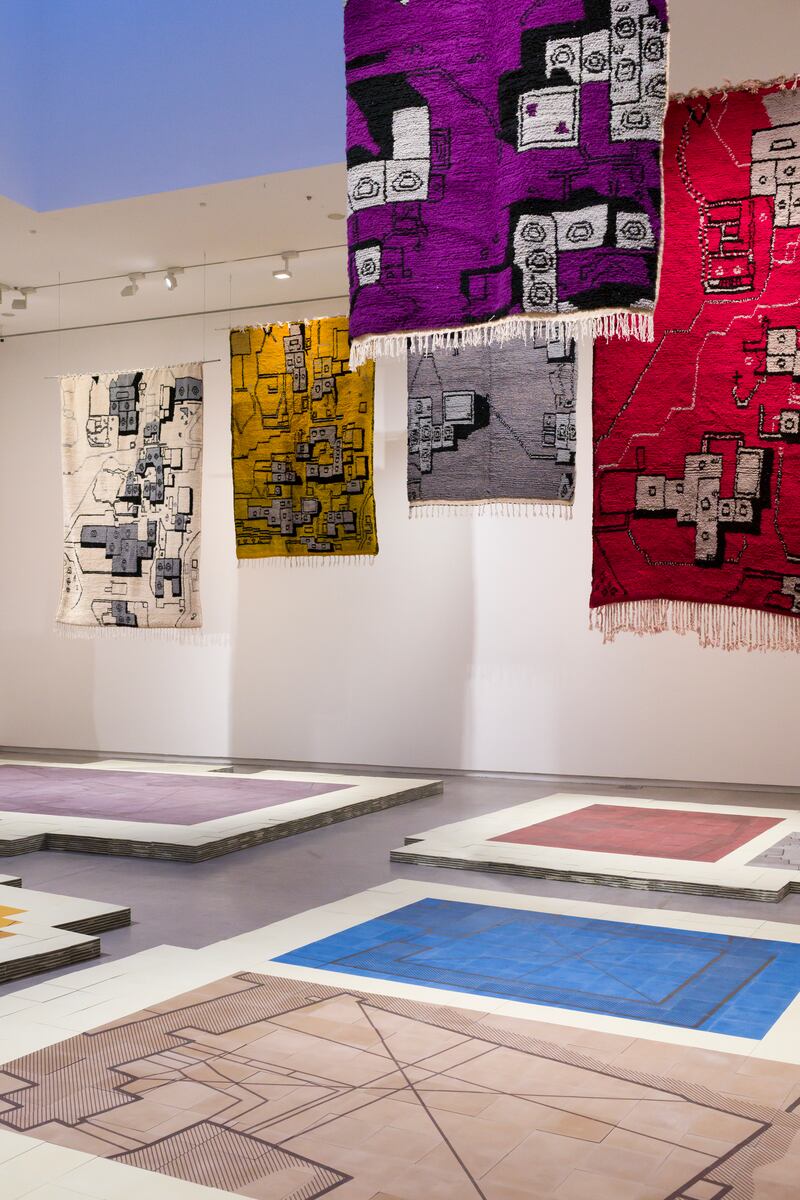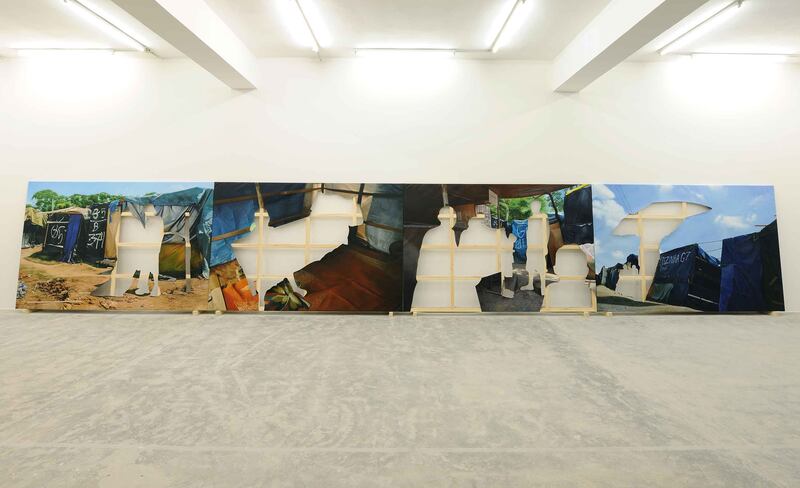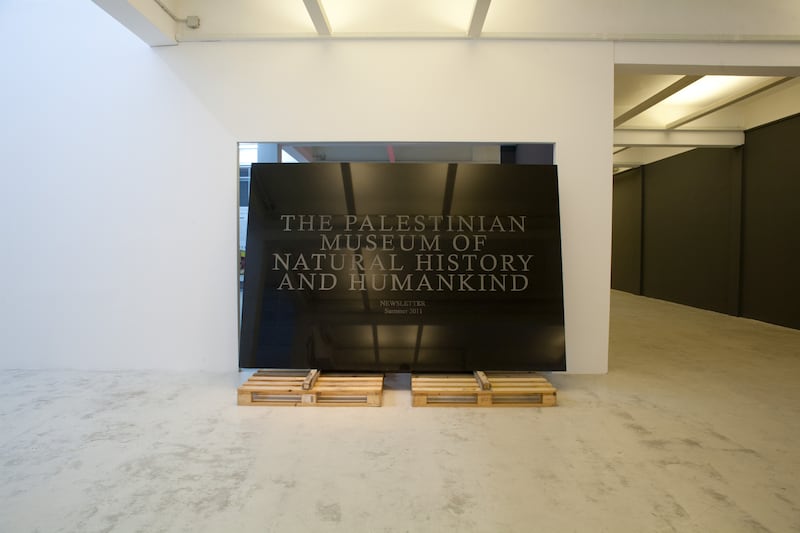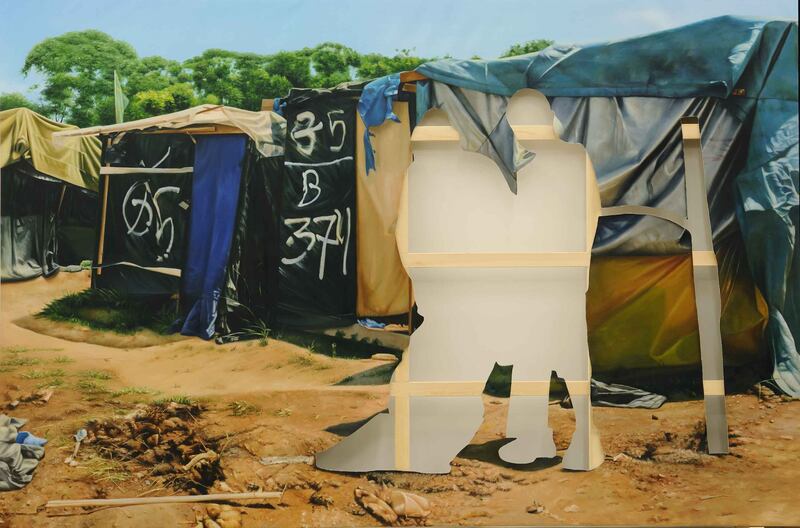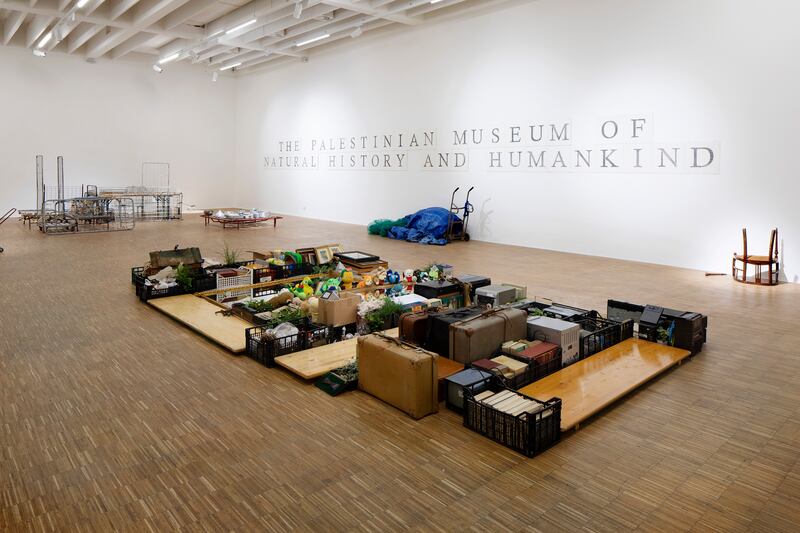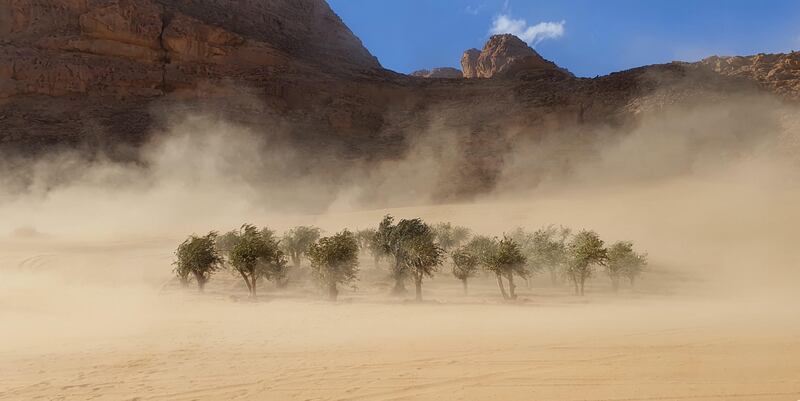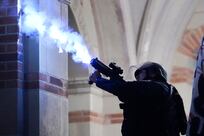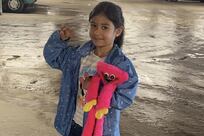Khalil Rabah has taken his travelling 20-year exhibition to Europe to share the plight of Palestinians.
Fondazione Merz is hosting the project, titled Through the Palestinian Museum of Natural History and Humankind, as it makes its debut in Turin, Italy.
The exhibition was planned long before the tragic events in Gaza began, but Rabah refused to cancel the show, as some artistic events have done. Instead, he believes it’s now more important than ever to showcase a Palestinian perspective in Europe at this moment.
“I feel we have a biennial war every two years in Gaza," he tells The National.
"It's sad to say, this is the reality, but nobody ever imagined they [Israel] would go to these extremes. I decided, no, we're resilient, we're going to keep going. This is our condition, it's been 75 years and we're familiar with it. The show hasn’t changed, but the context in which the visitors view the work has.”
The arrival coincides with the city's recent art fair Artissima and is curated by Claudia Gioia. It is the latest rendition of Rabah’s 20-year-old project, which has previously been displayed in Istanbul, Amsterdam, London, New York, Rome, Athens and Sharjah.
Created in 2003, the project is an imagined, yet poignantly real museum – complete with departments, a newsletter and a vast collection – seeking to challenge the role of museums as mere containers and focus on art as a tool for rethinking and correcting history, especially within the Palestinian context.
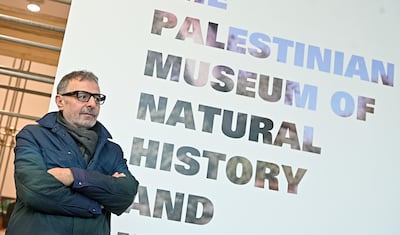
“It is a very performative kind of work, to in some way engage in storytelling and a narrative that is about the context of where I come from, but also how we think about museums,” Rabah adds.
“At the time when I started the museum, people were talking about how we never really had the chance to have a museum in Palestine. But what is a museum anyway? Is it the building?
“This project and exhibition here really challenges these notions of a museum as a container, the notion of a museum as housing a collection.
“Perhaps rethinking the history of something or rewriting it, correcting it, is the way to engage with museums.”
Through the lens of art, Rabah has tackled real-life social, political and philosophical issues, and this latest edition of the museum is no different, looking back on the projects the museum has presented since its inception. Despite being officiated in 2003, Rabah credits a much earlier project as the very beginning of his ideas.
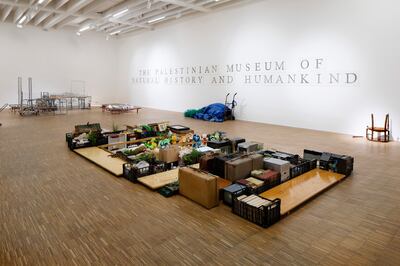
In 1995, Rabah presented the installation Grafting for the United Nations Office in Geneva for its 50th anniversary, bringing five olive trees from Ramallah, a city in the West Bank, to Ariana Park. Trimmed, bagged and painted white for travel, they started out as natural sculptures before growing and becoming part of the landscape.
“Twelve years later, we did another project, which is shown here in the exhibition," he says.
"In 2008, I was invited to participate in the Liverpool Biennial and my proposal was to look for these olive trees, to go and see what happened to them. Unfortunately, I found out that these trees were removed from the landscape – in a sense displaced again – and told by the company that helped us care for the trees, that the Israelis at the UN had lobbied to remove these trees, because they didn't like the idea that these are Palestinian."
He adds: “My project for the biennial then became about two legal cases. First, the legal case of suing the UN, with the help of attorneys in Switzerland, for removing the trees.
“For the second case, we found one of the trees in the Geneva Botanical Gardens. According to the immigration and naturalisation office in Switzerland, immigration laws state that a living thing that resides in Switzerland for 12 years, contributes to Switzerland and does not harm it – like this tree, has rights as a living thing to be naturalised.”
In the name of the Botanical Department of the Palestinian Museum of Natural History and Humankind, Rabah applied to grant the remaining tree naturalisation in Switzerland and documented the whole process. At Fondazione Merz, he has recreated the shows, bringing olive trees to Turin and showing all the documents related to the Liverpool Biennial project.
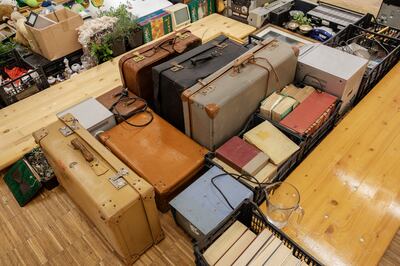
The exhibition is presented as a museum either under construction or while being dismantled. Works are lying around as though waiting to be mounted on walls or possibly taken down, with scaffolding around the show and a museum floor map guiding visitors through the different exhibits.
“The visitor, through testimonies and clues, can experience the artist’s attempt to stitch together a narrative capable of imagining new relationships with what surrounds us,” Gioia says.
“The collection is articulated following imaginary or real floor plans, enriched with moving images, photographs, small sculptures, oil containers and displays that compel visitors to pause and seek what history has left untold or inadequately narrated.”
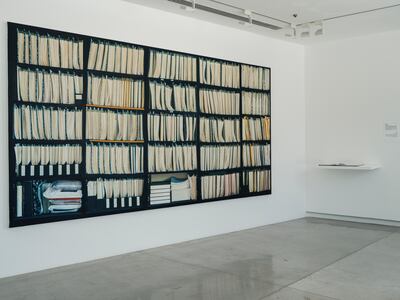
Works include his 50,320 Names, a cadastral register made from dozens of stacked folders that form a record of 50,320 historic buildings across 420 villages in Palestine. These buildings were never officially registered, a consequence of the cadastral policies (property or land boundaries recording) of the late 19th century in the time of the British Mandate.
The work stems from a real survey Rabah helped Riwaq Centre for Architecture Conservation publish, which took almost 15 years to complete. Due to ambiguity about the names of buildings – usually named after the families who live in them, subject to change over time – the names were omitted from the survey.
“Usually we put books with the spines on the outside, so we can read them, but I wondered what it would look like from the inside or from the other side of these files,” Rabah says. “I flipped the entire archive, showed the paper sides and took a photograph. I also published a book with only the names of these houses, that were not legally advisable to publish in the survey, but I wanted to bring the human element to the project.
“Because it was published by the museum as an artwork, it could be done, which goes back to how the museum is able to work with the politics and social aspects of real, important issues.
“It's not about numbers, it’s about the names of the people. This was almost 20 years ago but I will keep saying it today: they are not numbers, they are names.”
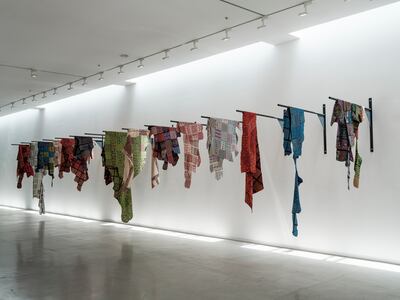
Common Geographies shows the fragmented geographies of the West Bank, Gaza Strip, Palestine and the Dead Sea by hanging their geographical shapes made from each area’s unique embroidery. While they celebrate the patterns, their hung shape also resembles animal skins or hides, using the symbolism of hunting trophies and the forced division of this once united landscape.
Through the Palestinian Museum of Natural History and Humankind runs until January 28 at Fondazione Merz, Turin
